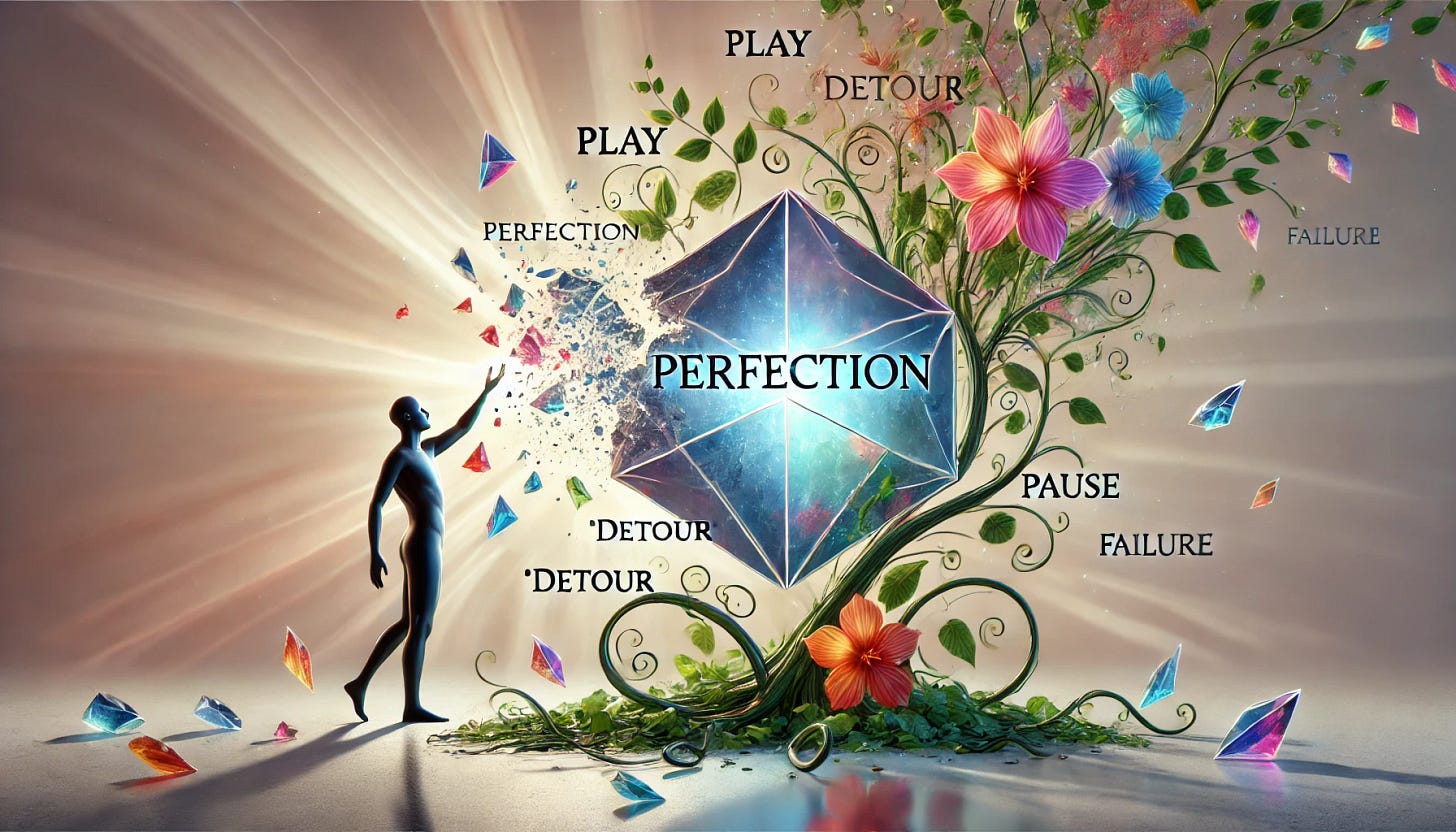Twelve Ways a Goal Can Succeed (Even When It Fails)
Turn every goal—met, missed, or morphed—into a meaningful source of momentum.
Introduction
Most of us have been conditioned to see goals through the lens of winning and losing—a rigid framework that creates unnecessary suffering and blinds us to the deeper transformations happening beneath the surface.
"Until one is committed, there is hesitancy, the chance to draw back, always ineffectiveness… The moment one definitely commits oneself, then Providence moves too." — W.H. Murray
What if there was a radically different way to approach our aspirations, one that honoured both ambition and acceptance, precision and surrender?
"Whatever you can do or dream you can, begin it. Boldness has genius, power and magic in it." — Goethe
The Tyranny of Binary Thinking
We've been taught to see goals through a narrow lens:
Success or failure,
Achievement or disappointment,
Hitting the target or missing entirely.
This binary framework seems practical—even necessary—but it's actually a trap that keeps us locked in cycles of anxiety, attachment, and self-judgment.
Consider how this plays out in real life.
You set out to write a novel and publish only three chapters.
You launch a business that pivots into something entirely different.
You train for a marathon but discover rock climbing along the way.
In the binary world, these are failures.
But what if that's the wrong question entirely?
What if every goal is actually a multidimensional catalyst that can generate value in directions you never imagined?
Goals as Living Systems
A more sophisticated approach views goals not as fixed destinations but as dynamic attractors in the complex system of your life.
Once you set a goal, it begins reorganising your perceptions, energy, relationships, and possibilities. The magic isn't in whether you "achieve" it—the magic is in how it transforms the field of your becoming.
This shift changes everything.
Instead of asking "Did I succeed?" we ask "What became possible?"
Instead of measuring ourselves against a single outcome, we become archaeologists of transformation, discovering value in places we never thought to look.
The Twelve Types of Goal Success
Here are twelve legitimate, meaningful outcomes that can emerge from pursuing any single goal:
Primary Outcome: The original result you aimed for—publishing the book, hitting the revenue target, running the marathon.
Emergent Outcome: Unexpected opportunities that weren't part of the plan—discovering a new passion, meeting a future collaborator, finding an entirely different path.
Developmental Outcome: Growth in capabilities—building resilience, developing creativity, strengthening discipline, expanding emotional intelligence.
Relational Outcome: Unexpected benefits in connections—deepening friendships, building team cohesion, learning to ask for help, inspiring others.
Energetic Outcome: A felt shift in your inner landscape—increased vitality, better alignment with your values, a sense of coming home to yourself.
Existential Outcome: Clarity about what matters—realigning your priorities, discovering new values, finding deeper meaning in daily life.
Course-Corrective Outcome: The wisdom to change direction—recognizing that the original goal was misaligned and having the courage to pivot.
Process Outcome: Finding sustainable rhythms—developing workflows, establishing habits, creating systems that will serve future endeavors.
Learning Outcome: Gaining crucial knowledge—about yourself, your field, or the world—that changes how you navigate life.
Aesthetic Outcome: Creating or participating in beauty—crafting something elegant, experiencing wonder, contributing to the world's beauty.
Enjoyment Outcome: Experiencing flow, curiosity, play, and aliveness during the pursuit—regardless of external results.
Spiritual Outcome: Cultivating presence, surrender, or detachment—growing in consciousness and expanding your capacity for acceptance.
The Liberation of Multiplicity
When you expand your definition of success to include this multiplicity, something profound happens to your nervous system.
The grip of perfectionism loosens.
The fear of failure transforms into curiosity about what might emerge. You begin to see value everywhere—in detours, pauses, apparent failures, small insights, wild experiments, and even heartbreak.
The goal becomes a function rather than a destination. It's not a test to pass but a catalyst for transformation.
A New Framework for Goal Setting
Here's how to apply this pluralistic mindset to your actual goals:
Expand Your Vision: When setting a goal, articulate multiple types of value you could gain—not just the outer result, but potential changes in skills, relationships, energy, and understanding.
Excavate Your Deeper Why: Surface the values beneath your goal, then ask: Could these values be fulfilled in other ways? This creates flexibility and reduces attachment.
Design Multiple Success Metrics: Identify various signals of progress—inner and outer, subtle and concrete. Success becomes a spectrum rather than a binary switch.
Create Parallel Pathways: Map several approaches to your goal. Design actions that generate value even if your original plan evolves.
Plan for Evolution: Build in regular check-ins to reassess and potentially pivot. Treat your goal as a living document, not a contract carved in stone.
Cultivate Beginner's Mind: Stay open to emergence. View every step as curriculum, every outcome as information.
Living the Practice
Whether you're launching a creative project, changing careers, healing a relationship, or building a new habit, this framework transforms how you move through the world:
Redefine success as multidimensional rather than binary
Design actions that serve multiple purposes
Celebrate subtle shifts alongside major milestones
Embrace pivoting as wisdom emerging, not failure accumulating
Navigate by both intention and surrender
The Unexpected Success Question
Here's a practice to break free from linear thinking: Before beginning any significant pursuit, ask yourself:
"What is the most unexpected success I could allow to emerge from this goal—even if it looks like failure at first glance?"
This question cracks open the conventional frame. It invites revelation rather than just resolution. It transforms goals from measuring sticks into invitations to dance with the unknown.
In that dance, we discover that the most profound successes often arrive disguised as detours, delays, or even apparent defeats. The art is learning to recognize them—and in doing so, we transform not just our goals, but our entire relationship with growth, success, and the beautiful uncertainty of being human.
In Conclusion
The path forward isn't about choosing between ambition and acceptance.
It's about weaving them together into something more nuanced, more alive, and ultimately more true to the complexity of how transformation actually works.
Anand













This is so liberating - thank you.